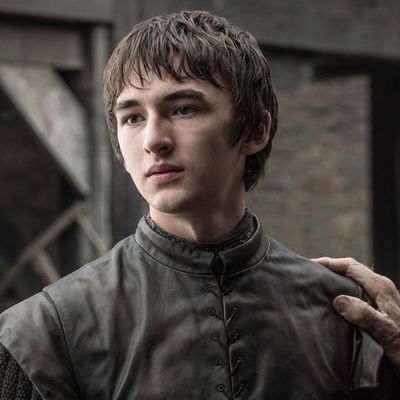
No show on TV this year will have you feeling more like an aunt than Game of Thrones, which is bringing back Isaac Hempstead-Wright’s Bran Stark and — oh my God, he’s gotten so big! Since the last time we saw him, the 16-year-old Hempstead-Wright has transformed from mop-topped tween to serious young man, which, while we certainly wouldn’t begrudge him for it, certainly raises the question of how old Bran is supposed to be now. In our world, five years have passed since Thrones premiered; how long has it been in Westeros?
Unfortunately, it’s hard to say for sure. We could track the passage of time on Rome or Downton Abbey quite easily, since their timelines often synced up with real-world historical events, but that’s not the way things work on the show, or in George R.R. Martin’s books — which most of the scholarship on the timing issue is concerned with. Martin is often fairly vague about things like time, in part because it gives him more storytelling leeway — it’s hard enough to get all those characters lined up correctly as it is — and also because, with seasons in Westeros lasting for years, his narrators don’t have the same psychological relationship with time that we do. (This same thing happens to people who move to Los Angeles.) Some chapters in the series cover a few weeks, some cover a few minutes, and in five published books, there’s only been one day whose date we’re entirely sure of: Joffrey’s wedding in A Storm of Swords, which took place on the first day of the year 300 A.C. (A.C. refers to “After Aegon’s Conquest,” the year the first Targaryen king took over the continent with his dragons. The calendar actually measures from the date of his coronation, not the start of his invasion, but we’re only mentioning that here so no pedants pop up to correct us in the comments.)
But fantasy fans are nothing if not extremely detail-oriented, and many of them have attempted to work out a universal timeline of the saga, regardless. Their work has rested on two main assumptions:
1. Days, weeks, months, and years are as long in Westeros as they are for us, which is handy for keeping this discussion from going completely off the rails.
2. A human gestation period still takes around nine months.
From there, we know that Daenerys got pregnant near the start of the book A Game of Thrones and was nearing the end of her term at its climax, so that novel must take place over the course of a little less than a year. And since Roslin Frey was impregnated at the Red Wedding in A Storm of Swords and had not yet given birth by Jaime Lannister’s chapter in A Dance With Dragons, the last three books proceed at a slightly faster pace, even considering the timeline overlap of Dance and A Feast for Crows.
Because he’s not a total sadist, Martin is also kind enough to include characters’ ages from time to time. Sansa starts the series at 11 years old, is almost 13 when she marries Tyrion in Storm, and ages herself up to 14 while posing as Littlefinger’s daughter in Feast. Joffrey’s 12th nameday takes place shortly before the beginning of Thrones, his 13th is at the beginning of Clash, and he’s still 13 when he dies in Storm. Arya is 9 at the beginning of Thrones, 10 at Harrenhall in Clash, and is “almost eleven” when she arrives in Braavos in Feast.
Add that all together, and you get various guesses at the total time elapsed since the saga began, with many of the discrepancies coming from everyone’s best guesses of how long sieges, marches, and ship journeys take. (There’s a lot of timeline fuzziness around travel in particular, so Martin can have coincidences like Tyrion and Catelyn running into each other at the inn in the first book.) For years, this massive forum post, published in 2008 before the publication of Dance, was the timeline to beat; it figures three-and-a-half years from Daenerys meeting Drogo in Game (season one) to Arya going blind at the end of Feast (season five), an event which seems to happen way later in the timeline than everything else. Its successor is this gigantic crowdsourced Google spreadsheet, with hundreds of citations, that comes up with a three-year span, with Thrones starting in mid-297 A.C. and Jon’s assassination in Dance coming eight months into 300 A.C. But again, there isn’t one definitive answer; this Quora user estimates a little more than two years for the whole thing. Generally, two or three years seems to be a good ballpark estimate.
Of course, as both George. R.R. Martin and the show’s producers will tell you, at this point the book is the book and the show is the show. Though they’ve diverged most sharply in recent years, the two versions have had different timelines since day one; the show increased the number of years since Robert’s Rebellion from 14 to 17, aging up many of its characters in the process. For what I assume is the sake of simplicity as much as anything else, the show’s Wiki assumes that each season takes place in a different year; since season one was 298 A.C., the upcoming season will take place in 303 A.C. Storywise, that might not make a ton of sense — Jon’s story line in seasons two through four really didn’t seem like it was taking place over the course of three whole years — but it solves the aging problem for the child actors at least. Anything else would be a wild guess. Hopefully, when winter finally comes, it will arrive with a very detailed calendar.





